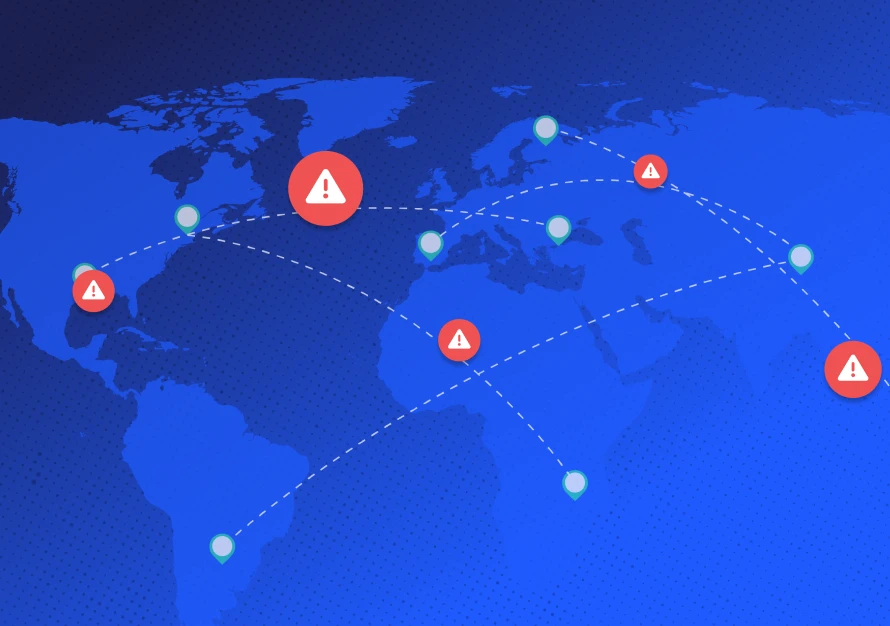In 2019, there were more than 5,000 worker fatalities in the US according to OSHA. That equates to an average of 100+ deaths a week or nearly 15 deaths every day. Supply chain incidents do happen, but they can be prevented.
Conducting regular hazard analyses is fundamental for businesses to stay proactive on emerging risks within their businesses.
Where to start?
Employees can be your greatest asset when developing a successful hazard analysis as they’re the ones who understand best the day-to-day tasks and the issues that may arise. Furthermore, having employees own their safety management creates a level of accountability and could show better results.
Putting together a hazard analysis can seem like a challenging task—that’s why we partnered with safety thought leader, Tim Page-Bottorff CSP, of CIT to put together an in-depth guide on how to go about it.
Let’s get started on your journey for a successful hazard analysis.
What is a hazard analysis?
A hazard analysis uses various techniques to evaluate possible job- or task-related risks before they occur. During a hazard analysis, employees or management will analyze every supplier, worksite or machinery to identify existing hazards and eliminate conditional and operational changes that create these hazards.
The best way to go about a hazard analysis is to develop a framework that lays down a set of guiding principles that can be followed in a step-by-step approach:
- Pre-analysis: This step involves preparing for the main analysis while setting expectations based on previous risk factors, records, and guidelines.
- Historical review: Analyzing previous injuries, illness, accidents, and close-calls at the company.
- Employee involvement: Involves open communication with employees about tasks and encourages their participation.
- Ensure compliance with regulatory authorities: incorporating local and global regulatory requirements like OSHA 29CFR1910.132 and ISO 45001.
- Set priorities: prioritizing specific jobs or areas for the analysis, which can save time and narrow down expectations.
- Hazard Analysis: This step is the actual analysis, where comprehensive insights are gathered and used to prevent hazards.
- Break the job into steps: breaking tasks down into steps and recording them ensure they’re later reviewed and measure appropriately.
- Hazard identification: Laying out potential risk factors, probable errors, and their consequences for each hazard.
- The hierarchy of control and control measures: Utilizing hierarchy of control for hazards to determine where the hazard occurs, and the workers involved. This step also includes training and awareness on proper hazard controls, hazard substitutions, and protective gear/tactics.
- Hazard review and elimination: Reviewing identified hazards with the employees as appropriate for their respective jobs.
- Post-analysis safeguards: This final step comprises utilizing the insights gathered from the analysis to implement viable hazard prevention measures.
- Apply prescribed changes: Using the insights gathered from the analysis, management can take preventive measures, such as securing unsafe conditions and processes and properly training workers on new, recommended safety workflows.
- Review hazard parameters: Periodically review the findings from the job hazard analysis to identify any risks that have been missed or ones that may manifest later to avoid any mishaps.
How Avetta can help
At Avetta, we provide a personalized platform for your business to achieve hazard-prevention success—with technology and staff to help you identify, track, and improve hazards in your supply chain. With Avetta’s comprehensive verification and assessment services, including the Avetta Risk Assessment Tool and Avetta One, companies can verify whether supplier safety controls and policies are up-to-date and compare established policies and procedures against accident and hazard investigation forms and training logs to ensure proper controls are implemented.
Avetta’s solutions help companies make smarter decisions faster by leveraging predictive capabilities and automated distribution of key reports and dashboards, resulting in improved performance and safety.

.svg)

.svg)
.svg)

.svg)

.svg)








